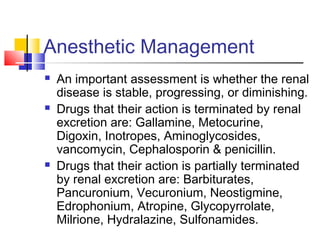

Strategic Anesthesia Management: Ensuring Surgical Comfort and Safety
Anesthesia management is a critical aspect of surgical procedures, focusing on the administration and monitoring of anesthesia to ensure patient comfort and safety. This article delves into the strategic approaches employed in anesthesia management, highlighting the significance of personalized care, advanced monitoring techniques, and the collaboration between anesthesia professionals and surgical teams.
Personalized Anesthesia Plans for Individualized Care
One of the key principles of effective anesthesia management is the development of personalized anesthesia plans for each patient. Anesthesia professionals, including anesthesiologists and nurse anesthetists, conduct thorough preoperative assessments to understand the patient’s medical history, current health status, and any potential risk factors. This information is used to tailor anesthesia plans that address the specific needs and characteristics of each individual, ensuring a customized and safe approach to anesthesia administration.
Advanced Monitoring Techniques for Enhanced Safety
Strategic anesthesia management incorporates advanced monitoring techniques to enhance patient safety during surgery. Continuous monitoring of vital signs, including heart rate, blood pressure, oxygen levels, and end-tidal carbon dioxide, allows anesthesia professionals to promptly detect and address any deviations from the norm. This real-time monitoring contributes to a safer surgical environment, providing immediate intervention if necessary.
Collaborative Decision-Making with Surgical Teams
Anesthesia management is a collaborative effort that involves close communication and decision-making with surgical teams. Anesthesiologists and nurse anesthetists work hand-in-hand with surgeons, nurses, and other healthcare professionals to coordinate anesthesia plans with the overall surgical procedure. This collaborative approach ensures that everyone is aligned on the patient’s care, contributing to a seamless and well-coordinated surgical experience.
Preventing Awareness During Surgery
A critical aspect of anesthesia management is preventing awareness during surgery, a rare but serious phenomenon where patients may become partially conscious and aware of their surroundings during the procedure. Anesthesia professionals use a combination of intravenous medications and inhaled anesthetics to induce and maintain a state of unconsciousness, closely monitoring the depth of anesthesia to prevent awareness and promote a comfortable experience for the patient.
Adapting Anesthesia Levels for Different Procedures
Different surgical procedures require varying levels and types of anesthesia. Anesthesia management involves adapting anesthesia levels to the specific requirements of each surgery. For minor procedures, local or regional anesthesia may be sufficient, while complex surgeries may necessitate general anesthesia to ensure complete unconsciousness. Anesthesia professionals assess the nature and duration of the surgery to determine the most appropriate anesthesia approach.
Postoperative Pain Management and Recovery
Strategic anesthesia management extends into the postoperative period, where pain management becomes a crucial component. Anesthesia professionals collaborate with the surgical team to develop tailored pain management plans, incorporating medications and techniques to alleviate discomfort while promoting a smooth recovery. This comprehensive approach contributes to enhanced postoperative outcomes and patient satisfaction.
Continuous Professional Development for Anesthesia Professionals
Staying abreast of advancements in anesthesia techniques and technologies is essential for anesthesia professionals. Continuous professional development ensures that these professionals are well-equipped with the latest knowledge and skills to provide optimal anesthesia care. This commitment to ongoing education contributes to the refinement of anesthesia management practices and the adoption of innovative approaches for patient benefit.
Patient Education and Informed Consent
Anesthesia management involves patient education and obtaining informed consent. Anesthesia professionals take the time to explain the anesthesia process, potential risks, and postoperative expectations to patients. This transparent communication fosters a trusting relationship and ensures that patients are well-informed participants in their healthcare journey. Informed consent is a crucial ethical component, allowing patients to make decisions with a clear understanding of the anesthesia plan.
Explore Strategic Anesthesia Management at Anesthesia Management
For those seeking a deeper understanding of the strategic approaches employed in anesthesia management, visit Anesthesia Management. Discover how personalized care, advanced monitoring, and collaborative decision-making contribute to the safety and comfort of patients undergoing surgical procedures. The link provides valuable insights into the meticulous planning and execution involved in anesthesia management for optimal surgical outcomes.








